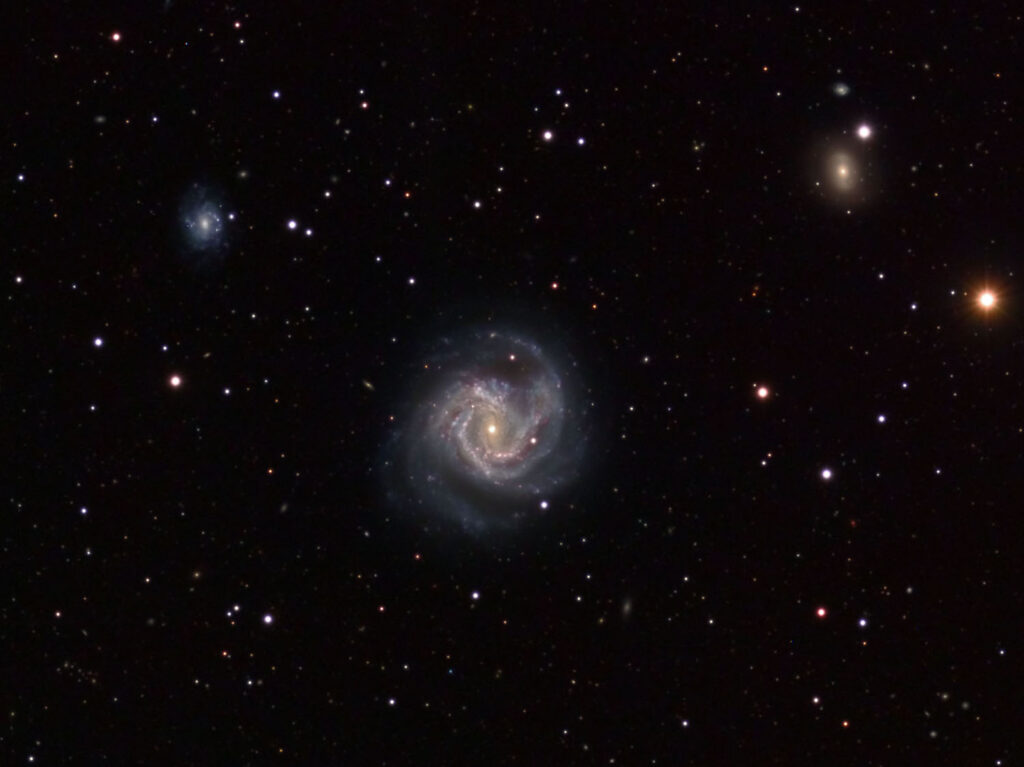Messier 61
Intermediate Spiral Galaxy, Virgo
- Description
- Technical
- Links
Messier 61 (also known as M61 or NGC 4303) is an intermediate barred spiral galaxy in the Virgo Cluster of galaxies. It was first discovered by Barnaba Oriani on May 5, 1779, six days before Charles Messier discovered the same galaxy. Messier had observed it on the same night as Oriani but had mistaken it for a comet.
M61 is one of the largest members of Virgo Cluster, and belongs to a smaller subgroup known as the S Cloud. The morphological classification of SAB(rs)bc indicates a weakly-barred spiral (SAB) with the suggestion of a ring structure (rs) and moderate to loosely wound spiral arms. It has an active galactic nucleus and is classified as a starburst galaxy containing a massive nuclear star cluster with an estimated mass of 105 solar masses and an age of 4 million years, as well as a central candidate supermassive black hole weighing around 5×106 M☉ solar masses. It cohabits with an older massive star cluster as well as a likely older starburst. Evidence of significant star formation and active bright nebulae appears across M61’s disk. Unlike most late-type spiral galaxies within the Virgo Cluster, M61 shows an unusual abundance of neutral hydrogen (H I).
Telescope: Astro Physics 175EDF f8.3
Mount: Astro Physics 3600GTO “El Capitan”
Camera: SBIG STT8300
Guider: Mini Borg 50 / SBIG STi
L: 90×10 mins = 900 mins, R: 25×10 mins = 250 mins, G: 24×10 mins = 240 mins, B: 24×10 mins = 240 mins
Total Imaging Time: 27h 10m
Data Imaged remotely over 10 nights during March & April 2017.
Data acquisition & Processing by David Churchill.
None

